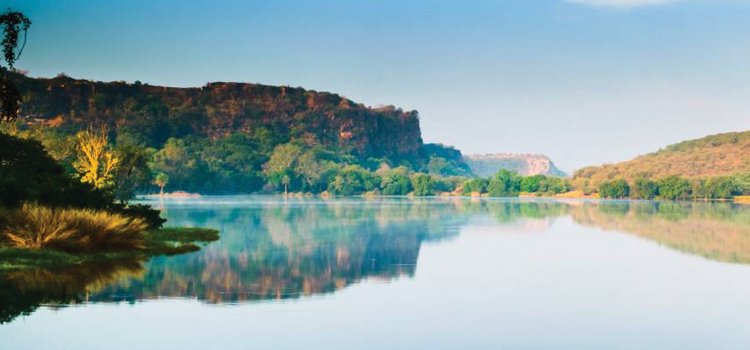TRAVEL
TRAVEL - Ranthambore
- Sharmila Chand
- Jul 05, 2025

Monsoon Charm
Whether you are a nature lover, a birding
enthusiast or simply looking for a peaceful retreat, Ranthambore is an ideal
place for some rain-drenched fun.
SHARMILA CHAND
Ranthambore is undoubtedly a unique destination. From
centuries-old temples to local legends and the well known Wildlife National
Park, it is an exceptional place for every discerning traveller.
Steeped in history and teeming with wildlife, from
pretty streams to waterfalls, forts and temples, there is ample to attract you
to this national park.
Monsoon season is not considered an ideal time to
visit wildlife forests, but here in the Ranthambore park, the story is
different. While the core zones remain shut during monsoon, the buffer zones
let you explore a unique flavour of the forest. Once the hot summer gets over,
it is time for the flora and fauna to breathe easy; it recuperates and is alive
with dense foliage.
Ask experienced naturalists, and they will recommend a visit in the rainy season, as they say, the monsoon gives a new lease of life to the inhabitants of the forest, with rare species of plants, deer and elephants rejoicing in the rain, and tigers too making their presence marked.
Enchanting wildlife
The park is home to an exclusive collection of mammals, reptiles and, of
course, birds. While the biggest draw is the big cats – the jungle has a good
population of Royal Bengal Tigers and leopards, not to forget striped hyenas,
sloth bears, several species of deer, jackal and desert fox, apart from the
marsh crocodiles, serpent eagle and porcupine.
Well, that is not enough. For birding enthusiasts, the forest is a delightful haven, as Ranthambore National Park is home to a rich variety of birds, thanks to its diverse terrain and numerous water bodies. There are more than 300 species that include serpent eagle, waterfowl, cormorant, painted spurfowl, sarus crane, bronze-winged jacana, sandpiper, kingfisher, nightjar, painted sandgrouse and great-horned owl. Be on the lookout for woodpeckers, Indian grey hornbills, common kingfishers, bee-eaters, cuckoos, parakeets, owls, drongos, bulbuls, mynas and more. Most of the birds inhabit the areas around the three large lakes – Padam Talao, Malik Talao and Rajbagh Talao.There is a rich variety of deciduous trees and open grassland, blessed with 500 and more species of flowering plants. While the Dhok tree is the signature tree of the forest, constituting about 80 per cent of the forest cover, there are also mango, tamarind and banyan trees. Do not miss one of the largest banyan trees of the country at Jogi Mahal.
Other significant flora of the forest include the
babul, gurjan, gum, kadam, khajur and khair.
Rich heritage
The ancient, historic Ranthambore fort enhances the cultural beauty and
heritage of the park. It is a UNESCO World Heritage Site, embracing several
legends and historical tales in its fold. Perched atop a hill, dating back to
the 10th century, it is indeed a magnificent site, showcasing impressive
Rajasthani architecture with its robust gates, carved temples and ancient
stepwells. The famous Trinetra Ganesh temple situated inside Ranthambore fort
is an added attraction.
You could also go for Chambal Safari expedition, a
delightful trip to Chambal river for crocodile safari. The crocodile safari in
Palighat gives an opportunity to spot several aquatic species like red-crowned
roof turtles, Ganges river dolphins, Indian roofed turtles and smooth-coated
otters.
To conclude
The monsoon travel experience at Ranthambore National Park should not be
missed. With its enthralling scenery and wildlife, it is partially open during
the monsoon season. The monsoon zones include 6,7,8,9 and 10 and remain open
all-year round and include three tiger territories.
Whether you are a nature lover, birding enthusiast or
simply looking for a peaceful retreat, Ranthambore in the monsoon calling when
the forest is lush, the air is cooler and the sighting is real. So, are you
ready to embark on your rain-soaked, mesmerising adventure?





















Report By
View Reporter News